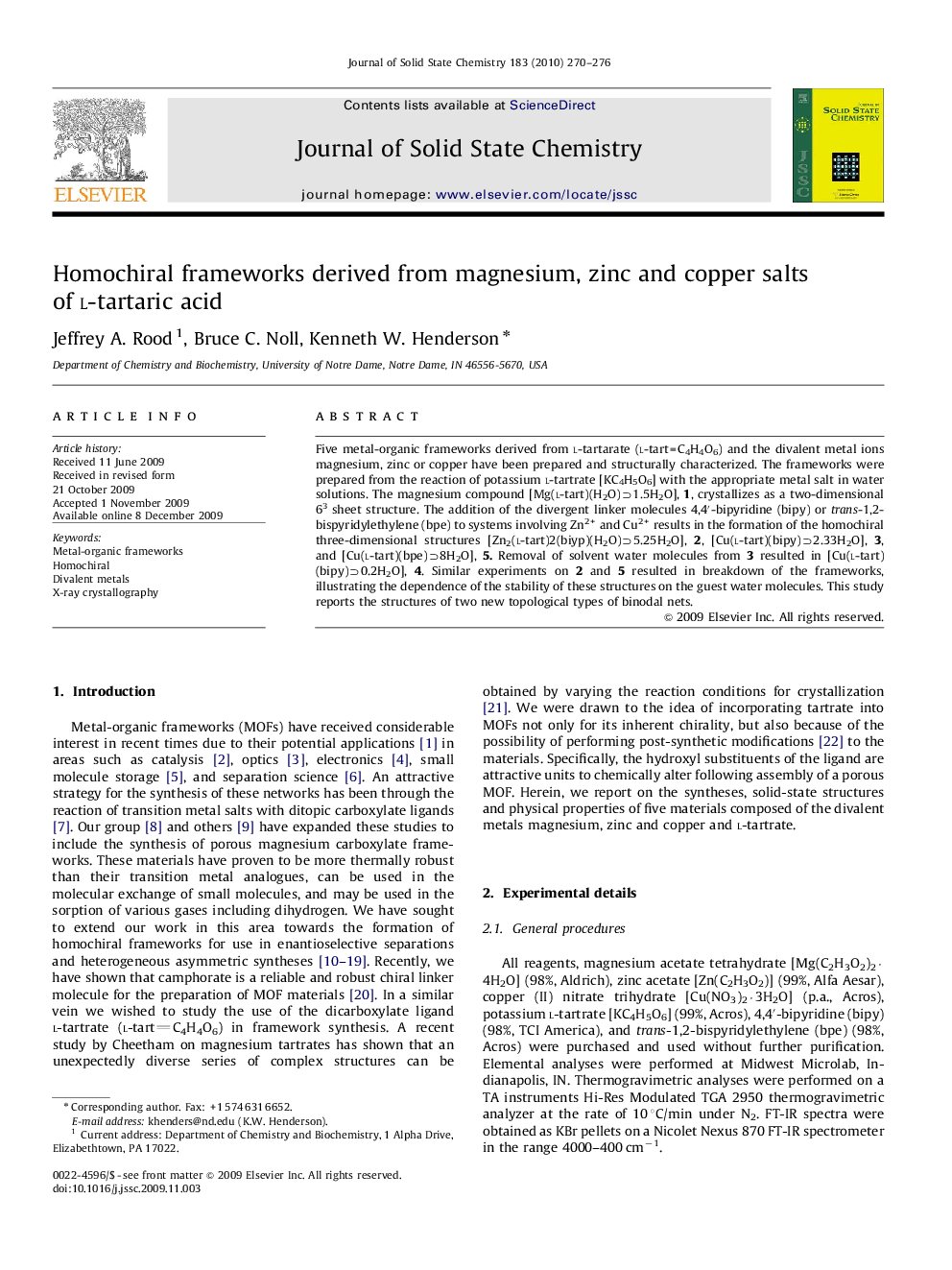| Article ID | Journal | Published Year | Pages | File Type |
|---|---|---|---|---|
| 1331349 | Journal of Solid State Chemistry | 2010 | 7 Pages |
Five metal-organic frameworks derived from l-tartarate (l-tart=C4H4O6) and the divalent metal ions magnesium, zinc or copper have been prepared and structurally characterized. The frameworks were prepared from the reaction of potassium l-tartrate [KC4H5O6] with the appropriate metal salt in water solutions. The magnesium compound [Mg(l-tart)(H2O)⊃1.5H2O], 1, crystallizes as a two-dimensional 63 sheet structure. The addition of the divergent linker molecules 4,4′-bipyridine (bipy) or trans-1,2-bispyridylethylene (bpe) to systems involving Zn2+ and Cu2+ results in the formation of the homochiral three-dimensional structures [Zn2(l-tart)2(biyp)(H2O)⊃5.25H2O], 2, [Cu(l-tart)(bipy)⊃2.33H2O], 3, and [Cu(l-tart)(bpe)⊃8H2O], 5. Removal of solvent water molecules from 3 resulted in [Cu(l-tart)(bipy)⊃0.2H2O], 4. Similar experiments on 2 and 5 resulted in breakdown of the frameworks, illustrating the dependence of the stability of these structures on the guest water molecules. This study reports the structures of two new topological types of binodal nets.
Five metal-organic frameworks derived from l-tartarate and the divalent metal ions magnesium, zinc or copper have been prepared and structurally characterized. Significant structural diversity is displayed within this set of complexes.Figure optionsDownload full-size imageDownload as PowerPoint slide
